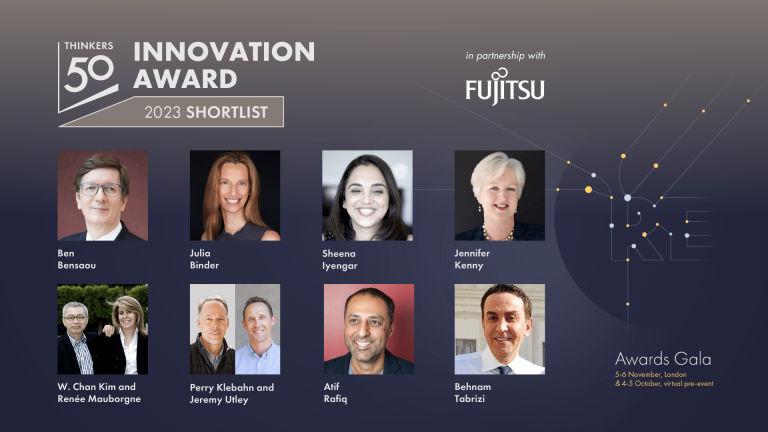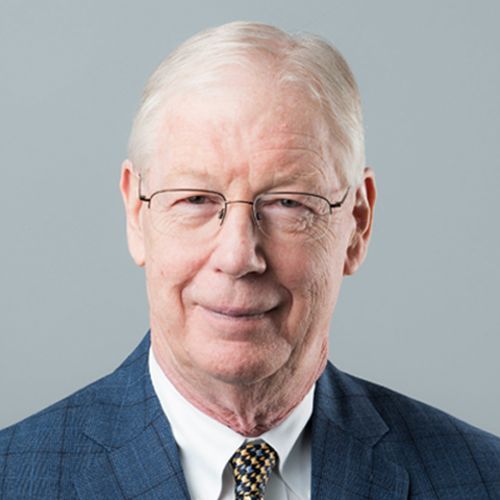

by Doug Ready- Senior Lecturer, MIT Sloan School of Management; Founder, ICEDR
Why has Implementing Enterprise-Wide Transformation proven to be troubling? When challenges persist it is often because there are embedded tensions or paradoxes that surface that seem unresolvable. There are at least five embedded tensions that make the successful implementation of enterprise transformations persistently difficult. They are:

Let’s examine each of these tensions…
The Transformation Leader’s Job
We know from prior research on this topic that two thirds of large-scale transformation efforts fail to achieve their intended objectives. So, what can we do as change leaders to improve these odds?
First, we need to embrace this notion of embedded tensions that make the challenge all the more complex. There are no easy answers; however, the leader’s bedrock commitment to helping to reconcile these tensions is paramount. That means above all committing to an on-going communications and listening campaign so people know what’s going on and know how they might contribute to the transformation effort―and know that they are invited to do so. This process starts by the CEO and top team telling powerful and compelling stories of where the company has been, where it is now and where it needs to go―and why.
Next, the leadership of the change effort can’t end with the top team, the top 100, or the top 1,000. It has to be an all-hands-on-deck engagement. The change leader must signal that enterprise-wide transformation will be a collective accountability, with leadership for the effort distributed throughout the organization. The change leader will need to be skilled at network orchestration in order to have the transformation initiatives integrated so as to minimize change weariness brought on by uncoordinated efforts.
Third, change leaders must go beyond storytelling, motivation and mobilization efforts―they need to provide the resources to skill-up the company and build next generation mission-critical capabilities to propel them to their desired future state. This includes capital improvements, process improvements and building new talent capabilities.
Fourth, leaders and employees will need to build a powerful sense of mutual trust. This is where the will to persevere and the courage to address long-accepted doctrine takes center stage. The messaging provided about the characteristics of the new organization will need to be backed up with the systems, processes and rewards to make the journey authentic. In other words, if leaders state that their organizations will become the world’s benchmark in customer service then employees will need to see that resources have been committed to build that capability and that rewards are distributed to those who exemplify world class customer service behaviors.
Finally, it has become increasingly clear that the transformation journey is a never-ending one. Change leaders must combine words, motivation, capability-building efforts and trust with a relentless commitment to implementation and discovery. While implementing large-scale change leaders should be asking: what are we learning as we’re progressing? This will help to create a culture of agility and resiliency that will pay dividends out into the future, making large-scale change a collective challenge to be embraced together.

Thinkers50 Limited
The Studio
Highfield Lane
Wargrave RG10 8PZ
United Kingdom

Thinkers50 Limited
The Studio
Highfield Lane
Wargrave RG10 8PZ
United Kingdom

| Cookie | Duration | Description |
|---|---|---|
| LANG | 9 hours | Linkedin set this cookie to set user's preferred language. |
| nsid | session | This cookie is set by the provider PayPal to enable the PayPal payment service in the website. |
| sp_landing | 1 day | The sp_landing is set by Spotify to implement audio content from Spotify on the website and also registers information on user interaction related to the audio content. |
| sp_t | 1 year | The sp_t cookie is set by Spotify to implement audio content from Spotify on the website and also registers information on user interaction related to the audio content. |
| tsrce | 3 days | PayPal sets this cookie to enable the PayPal payment service in the website. |
| x-pp-s | session | PayPal sets this cookie to process payments on the site. |
| __cf_bm | 30 minutes | This cookie, set by Cloudflare, is used to support Cloudflare Bot Management. |
| Cookie | Duration | Description |
|---|---|---|
| l7_az | 30 minutes | This cookie is necessary for the PayPal login-function on the website. |
| Cookie | Duration | Description |
|---|---|---|
| CONSENT | 2 years | YouTube sets this cookie via embedded youtube-videos and registers anonymous statistical data. |
| _ga | 2 years | The _ga cookie, installed by Google Analytics, calculates visitor, session and campaign data and also keeps track of site usage for the site's analytics report. The cookie stores information anonymously and assigns a randomly generated number to recognize unique visitors. |
| _gat_gtag_UA_10408481_1 | 1 minute | Set by Google to distinguish users. |
| _ga_ZP8HQ8RZXS | 2 years | This cookie is installed by Google Analytics. |
| _gid | 1 day | Installed by Google Analytics, _gid cookie stores information on how visitors use a website, while also creating an analytics report of the website's performance. Some of the data that are collected include the number of visitors, their source, and the pages they visit anonymously. |
| Cookie | Duration | Description |
|---|---|---|
| NID | 6 months | NID cookie, set by Google, is used for advertising purposes; to limit the number of times the user sees an ad, to mute unwanted ads, and to measure the effectiveness of ads. |
| test_cookie | 15 minutes | The test_cookie is set by doubleclick.net and is used to determine if the user's browser supports cookies. |
| VISITOR_INFO1_LIVE | 5 months 27 days | A cookie set by YouTube to measure bandwidth that determines whether the user gets the new or old player interface. |
| YSC | session | YSC cookie is set by Youtube and is used to track the views of embedded videos on Youtube pages. |
| yt-remote-connected-devices | never | YouTube sets this cookie to store the video preferences of the user using embedded YouTube video. |
| yt-remote-device-id | never | YouTube sets this cookie to store the video preferences of the user using embedded YouTube video. |
| yt.innertube::nextId | never | This cookie, set by YouTube, registers a unique ID to store data on what videos from YouTube the user has seen. |
| yt.innertube::requests | never | This cookie, set by YouTube, registers a unique ID to store data on what videos from YouTube the user has seen. |
| Cookie | Duration | Description |
|---|---|---|
| DEVICE_INFO | 5 months 27 days | No description |
| loglevel | never | No description available. |
| m | 2 years | No description available. |
Thinkers50 Limited has updated its Privacy Policy on 28 March 2024 with several amendments and additions to the previous version, to fully incorporate to the text information required by current applicable date protection regulation. Processing of the personal data of Thinkers50’s customers, potential customers and other stakeholders has not been changed essentially, but the texts have been clarified and amended to give more detailed information of the processing activities.